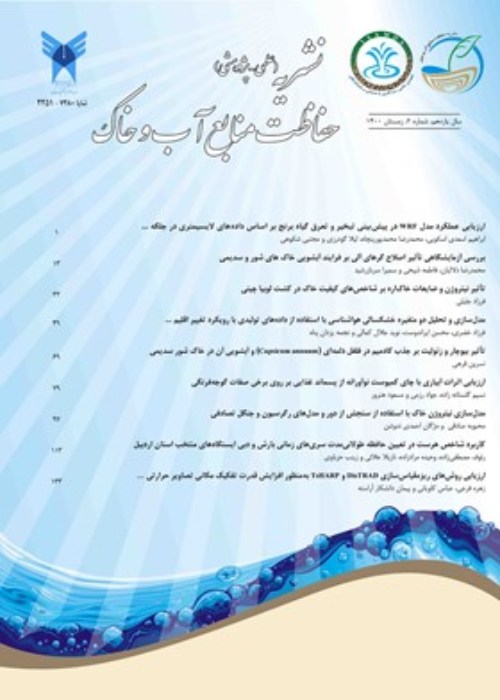The Effect of Water Use Management in Growth Different Stages on Two Peanut Cultivars Using WOFOST Model
One of the most important factors limiting peanut production is water stress and shortage in plant growth stages. Therefore, crop simulation models can be useful for predicting yield and assessing the effect of water stress on plant growth and development. In this study, the WOFOST model was used to simulate biomass yield, seed yield and water use productivity in peanut. As the peanut modeling research has not been well-addressed in Iran, thus, the purpose of this study is to evaluate the ability of WOFOST model to simulate the yield of two peanut cultivars under irrigation conditions at different growth stages in Astaneh Ashrafiyeh region.
This experiment was performed in the form of split plots in a randomized complete block design with three iterations. The main treatment included irrigation until the beginning of flowering time (I1), irrigation until the beginning of pod time (I2) and full irrigation (I3), and the sub-treatment included two cultivars of Jonobi peanut (C1) and Guil (C2). The WOFOST version 7.1.3 model was employed. In this model, crop growth simulation is based on carbon cycle, which models crop growth in three situations: absence of limiting factor, water limitation, and nutrient limitation.
Model evaluation showed that the root mean square between the observed and simulated values in estimating biomass yield for Jonobi and Guil cultivars in 2017 were 0.554 and 0.501%, in 2018 were 0.872 and 0.897%, and in 2019 were 0.449 and 0.466%, respectively. The root of the mean squares between the observed and simulated values in estimating seed yield for Jonobi and Guil cultivars in 2017 were 0.052 and 0.065%, in 2018 were 0.132 and 0.131%, and in 2019 were 0.101 and 0.096%, respectively. The mean values of relative error between the observed and simulated values in 2017, 2018 and 2019 for biomass yield were 10.2, 18.1, and 7.7%, and for seed yield were 4.35, 6.4 and, -4.5%, respectively; also the efficiency coefficient index ranged from 0.442 to 0.960.
Evaluation of simulated and observed values on biomass yield and seed yield demonstrate that RMSE, RMSEn and other statistical indexes were acceptable and the WOFOST model simulated two peanut cultivars accurately in different irrigation treatments.
- حق عضویت دریافتی صرف حمایت از نشریات عضو و نگهداری، تکمیل و توسعه مگیران میشود.
- پرداخت حق اشتراک و دانلود مقالات اجازه بازنشر آن در سایر رسانههای چاپی و دیجیتال را به کاربر نمیدهد.



